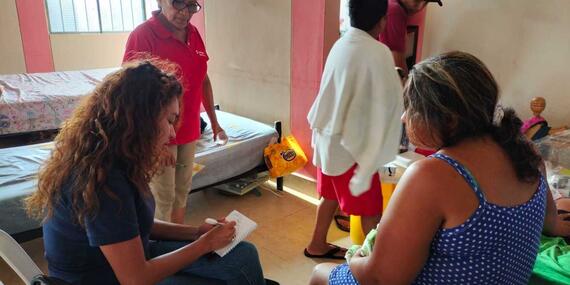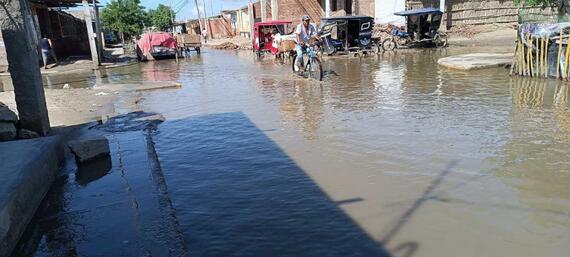Peru: When floods wash away livelihoods

The heavy rains pummeling the coasts of Peru since January have left more than 510,000 people in need of humanitarian aid, according to estimates from the National Humanitarian Network. The ensuing floods, landslides and ongoing rains in certain areas are presenting response challenges.
Angelica, a 34-year-old pregnant mother of four, sits on a bed in an official shelter in Piura, one of Peru’s northern departments most affected by the floods.
“I lost my whole house, it was sad to see how the water was rising steadily,” she explains. “We tried to get things out but it all happened so fast. The only thing I managed to take out was my bed. Everything else was ruined."
The rainy season has been marked by a series of weather events, such as Cyclone Yaku — the first cyclone recorded in this area of the Pacific in 40 years — followed by the unusual warming of ocean waters off the coasts of Ecuador and Peru, forcing Peruvian authorities to declare an alert for the coastal El Niño phenomenon. Lambayeque, Piura and Tumbes departments bore the brunt of the flooding, but authorities declared an emergency for more than half of Perú’s districts.
Angelica is receiving treatments for ailments that have worsened since she moved to the shelter with her family.
“We have been receiving assistance, but we still need more support,” she explains. “We don't know how long we are going to be here, my family lost everything. My husband, who worked as a motorcycle cab driver, lost his only means of income because the motorcycle got water in the engine and wouldn’t start. I used to sell food on the weekends, but the floods ruined all my pots and pans, so we have to start over from scratch."

Climate change and its effects are becoming more and more intense, and forecasts indicate that a strong El Niño should hit Peru and neighbouring countries by the year’s end. This will likely cause similar scenarios, placing many already vulnerable families even further at risk and potentially affecting other areas.
The threat of further climate shocks hangs over thousands of displaced families like Angelica’s, and providing them with basic supplies — such as water, food, clothing and medicine — remains a significant challenge, as does finding the resources to reconstruct people’s homes and restore their livelihoods.
The situation will likely persist in the coming months. Angelica is already thinking about what to do next to recover her livelihood and support her family. Not wanting to relive the experience of her home being washed away, she is reluctant to return to her community after the flooding recedes.
“I want to be relocated with my family, but for that I will need support to go to a safer place,” she says.
For more on the Peru floods and landslides, visit: https://bit.ly/3LUKBPZ
